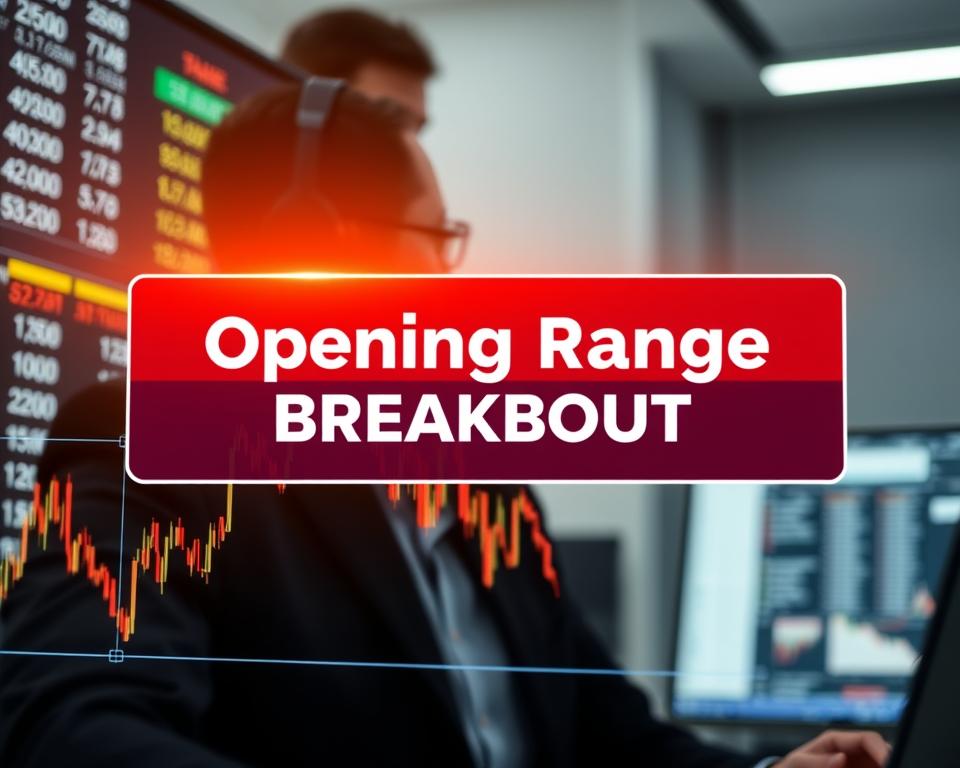Anúncios
Can a focused 30-minute routine really help you trade smarter without living on your screen?
Yes—but it takes discipline, clear rules, and realistic expectations.
This short guide shows you how to apply one compact plan that fits into your day. You’ll learn simple chart setups, quick analysis steps, and risk rules you can use across forex, crypto, and options.
Expect examples tied to liquid forex pairs during the London/New York overlap and a crypto swing variant using the 200 EMA with MACD confirmation. We also cover Opening Range Breakout basics and how to set alerts to act faster.
This is informational guidance, not a promise of profit. Test ideas, keep risk discipline, and consult a qualified professional for financial decisions.
Anúncios
Introduction: Why apply strategy 30min can sharpen your trading in a busy day
This short guide helps you convert noisy charts into clear decisions in a compact window. You’ll learn quick analysis steps that let you act on short-term price shifts without watching the market all day. The goal is better focus, not guaranteed wins.
Context matters. Forex sees its highest liquidity during London (3:00 AM–12:00 PM EST), New York (8:00 AM–5:00 PM EST), and the 8:00 AM–12:00 PM overlap. Crypto runs 24/7, but volatility clusters around session overlaps and major news. Options traders watch the opening 15–60 minutes for early price action.
This guide covers tools, basic technical analysis, entries, exits, and examples across forex, crypto, and options. It does not teach complex quantitative systems or promise profits. You’ll get a practical routine to help you capitalize short-term moves while keeping risk controls in place.
Anúncios
Responsible use and expectations
Keep your rules simple. Use position sizing and stop losses. Treat early signals as information to weigh, not guarantees. If you need tailored advice, consult a licensed professional before making financial decisions.
Set your 30-minute foundation: markets, timeframe, tools, and risk rules
Build a compact setup that reduces noise and highlights reliable entry and exit cues.
Markets and sessions: Start with liquid pairs—EUR/USD, GBP/USD, USD/JPY, USD/CHF—during the London/New York overlap. These pairs give tighter spreads and more frequent signals in short windows.
Chart and indicators: Use a 30-minute timeframe with the 200 EMA for trend direction. Add MACD for momentum and RSI to flag stretched conditions. Mark recent swing highs and lows to define support and resistance.
- Set the 200 EMA to decide market direction quickly.
- Use MACD as a filter—not the sole signal.
- Use RSI to spot overbought/oversold levels near key zones.
Risk management first: Cap per-trade risk at 1–2% of your account. Size your position using stop distance, and aim for at least a 1:1.5 reward-to-risk ratio.
Write plain-language entry and exit rules you can check in seconds. Keep a short pre-trade checklist: timeframe, indicators aligned, level identified, position size set, and order ready. Treat tools as aids—they inform your decision but don’t replace judgment.
30-minute trading plan templates can speed setup and reduce friction so your minutes are spent trading, not configuring charts.
Reading trend and price action on the 30-minute chart
Focus on a few clear rules to read trend direction and price structure fast.
Trend direction with the 200 EMA and swing structure
Start by checking the 200 EMA. If price is above the 200 EMA and printing higher highs and higher lows, bias is up. If price is below and printing lower highs and lower lows, bias is down.
Draw a clean line through swing lows in an uptrend or swing highs in a downtrend. This line visualizes momentum and where pullbacks may find support or resistance.
Support, resistance, and confluence with candlestick patterns
Mark key high and low areas where price reacted multiple times. Those zones are decision points for continuation or reversal.
- Combine price action with marked levels—look for confluence, such as a pin bar rejecting support in the trend direction.
- Treat candlestick patterns as context, not commands; one candle has weight only when it matches the swing structure.
- Keep charts uncluttered: a few lines and levels plus one or two indicators are enough.
Reassess if you see alternating highs and lows—shift from trending expectations to a range approach. Use RSI to confirm if a pullback is healthy (e.g., RSI cooling from overbought during an uptrend).
Take a quick screenshot and write one sentence about what the structure shows. This habit builds pattern recognition without adding time to your trading routine.
Execution blueprint: entries, exits, and trade management in 30 minutes
Focus on clear entry cues, fixed exits, and simple trade management to keep decisions fast.
Entry criteria: confluence and timing
Trade with confluence. Look for trend direction, a clean level, and a confirming signal before you take an entry.
Use a short checklist: trend aligned, level marked, indicator or pattern confirms, and position sized to your max risk.
Exit logic: fixed targets, trailing stops, and break-even rules
Set profit targets at the next logical level and keep your reward-to-risk at least 1:1.5 when possible.
Place the stop where the setup is invalidated, not at an arbitrary distance. Move to break-even only after structure supports it.
For active winners, trail the stop behind recent swing lows or highs so winners run without micromanagement.
Trade review loop: journaling and adapting
Keep execution boring and repeatable. Before the end of the day, take a screenshot and note entry, exit, why you took the trade, and any edge or mistake.
- Confirm entry — place orders and alerts.
- Manage position by predefined rules or a simple trailing stop.
- Record the trade with a screenshot and short notes for review.
Respect a daily stop: if your limit is hit, stop trading for the day to avoid impulsive action. Review weekly to refine rules and remove tactics that don’t fit your markets or schedule.
apply strategy 30min with proven frameworks: EMA+MACD swing, price-action setups, and ORB
Use three compact frameworks that fit a busy day so you can capitalize short-term moves without overcomplicating charts.
Trade only with the trend: buy when price sits above the 200 EMA and the MACD blue line crosses up for confirmation. Sell when price is below the 200 EMA and the blue line crosses down.
Keep this as a 2–3 day swing example. Place stops under the recent swing low or above the recent swing high, and set targets at nearby structure.
Forex price-action setups
On the 30-minute timeframe, watch for clear consolidation then a decisive breakout, or trade pullbacks to a trendline or moving average with a rejection candle.
Validate entries with simple patterns like pin bars or engulfing candles. Place stops beyond the confirming candle and size risk to 1–2% of your account.
Opening Range Breakout (ORB)
Map the first 15/30/60-minute high and low. A clean breakout above or below that range gives a directional trigger.
Choose the period that fits the session and asset liquidity. Use alerts at the high/low so you can respond quickly without staring at the chart.
- Test all approaches on demo first.
- Don’t overfit indicators; favor clear structure and repeatable execution.
- Adjust rules per market and your available time.
Backtested insight and automation: using ORB data and alert-driven workflows
Opening-range backtests reveal how period choice shapes win rate, drawdown, and trade frequency.
What the numbers show: In this test set the 60-minute range outperformed 15- and 30-minute ranges. The 60-minute ORB produced higher win rate (88.8%), larger average profit per trade, and a stronger profit factor while showing lower drawdown.
Use a minimum opening-range width filter (≥0.2%) to weed out narrow ranges that create noisy breakouts. Limiting to one position per day also reduced overtrading and clarified your edge in the journal.

Automation with alerts and semi-automated execution: safer ways to scale your process
Set alerts at the opening range high and low so you catch a breakout without staring at charts. Alerts at volatility spikes or key levels add useful context for your trade decision.
Semi-automated execution—alerts plus manual confirmation—lets you preserve judgment while cutting missed entries and order errors. If you move to full automated trading, build limits for max daily losses, per-trade position caps, and watchdog checks for slippage.
- Translate backtests cautiously: forward test before scaling.
- Monitor your bot’s logic and update filters as market behavior shifts.
- Keep risk management rules embedded in any automation to control losses and protect profit.
Conclusion
Close your session by locking in clear rules that help you trade with less noise and more confidence.
Keep your routine simple: anchor a trading strategy to the timeframe and period you watch, pick assets you know, and focus on trend and range that show reliable behavior.
Define entry and exit rules you can check in minutes. Size each position to limit risk, and use stops to protect capital.
As a trader, record every trade with a screenshot and a short note. Review your trades to learn what works and drop tactics that don’t.
Test ideas, respect risk, and trade with discipline. Use these frameworks—EMA+MACD, price-action, ORB—carefully, and consult a licensed professional when you need tailored advice.



